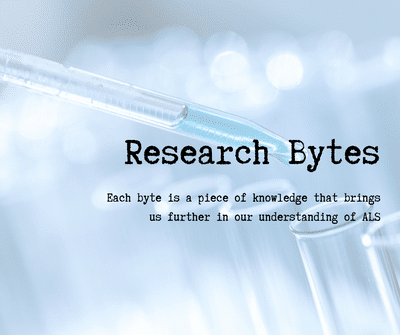


Packard team identifies a new mechanism through which mutant FUS can lead to ALS

A team of Packard-funded scientists, led by Udai Pandey and Chris Donnelly at the University of Pittsburgh, have identified a new mechanism through which mutant FUS can lead to ALS
Mutations in the gene Fused in Sarcoma (FUS) are the third most common genetic cause of ALS. The gene itself is involved in RNA binding and metabolism, and mutations lead to the mislocalization of FUS from the nucleus to the cytoplasm, and a buildup of toxic protein clumps. But researchers knew little about the pathophysiology of mutant FUS and how it led to disease.
In a new study in Acta Neuropathologica, a team of Packard-funded scientists led by Udai Pandey at the University of Pittsburgh have identified a new mechanism through which mutant FUS can lead to ALS. Their work revealed that FUS mutations lower levels of a DNA damage repair protein called DDX17, and that restoring DDX17 levels to normal protects against mutant FUS toxicity.
The FUS protein is divided into seven domains; most ALS-linked mutations have been traced to a region near the end of the protein that contains a nuclear localization signal. Although scientists have long known that both FUS and TDP43 (another ALS-linked protein) are involved with RNA processing and metabolism, other more recent work has hinted that FUS might also play a role in the DNA damage repair pathway. Studies in primary cortical neurons showed that FUS interacts with the DNA damage repair protein HDAC1. Motor neurons derived from induced pluripotent stem cells (iPSCs) containing ALS-linked FUS mutations also showed signs of increased DNA damage.
To determine if and how FUS mutations might be linked to DNA damage repair machinery, Pandey and colleagues began by studying Drosophila that were engineered to express an ALS-linked FUS mutation. The authors found that these mutations led to global changes in gene expression in the fruit fly brains. To narrow down their results and identify the biologically relevant pathways altered by mutant FUS, the researchers compared the transcriptome of Drosophila and human cells expressing mutant FUS and identified several commonly misregulated targets across both species. One result that stood out as being significantly downregulated was the fly version of the human Dead-box helicase 17 (DDX17) gene.
Based on these results, the researchers expressed mutant FUS in human embryonic kidney (HEK) cells. They found that levels of DDX17 were reduced by up to 60% in mutant FUS expressing HEK cells compared to controls, which suggests that DDX17 expression is downregulated in response to mutant FUS. In collaboration with Dr. Donnelly (an Assistant Professor of Neurobiology at The University of Pittsburgh and a member of the Packard Center’s Scientific Executive Committee), they went on to demonstrate that DDX17 levels are downregulated in FUS P525L iPSC neurons. Further experiments revealed that mutant FUS recruits DDX17 into stress granules in the cytoplasm in numerous cell types. These stress granules, composed of RNA and proteins, trap DDX17 into the cytoplasm and alter its biological function.
Pandey and colleagues found that DDX17 physically and functionally interacts with FUS via one of its RNA-binding domains (RGG-domain). When the researchers created mutations in an RNA-binding domain of FUS, they found it no longer bound to DDX17. When the researchers increased the expression of DDX17, however, they found it reduced the formation of both stress granules and the formation of toxic, insoluble clumps of FUS protein. The overexpression of DDX17 also reduced DNA damage in mutant FUS iPSC motor neurons and reduced their risk of induced cell death.
“Our work highlights that reduced levels of DDX17 in response to mutant FUS might play a significant role in the pathogenesis of ALS,” concludes first author Tyler Fortuna, a Ph.D. student in the Department of Pediatrics at the University of Pittsburgh. “We demonstrate that restoration of DDX17 suppresses FUS-mediated neurodegeneration in FUS-expressing human cells and Drosophila.”
Taken together, these results indicate new mechanisms by which FUS mutations cause ALS and suggest a new therapeutic target for reducing FUS toxicity.
